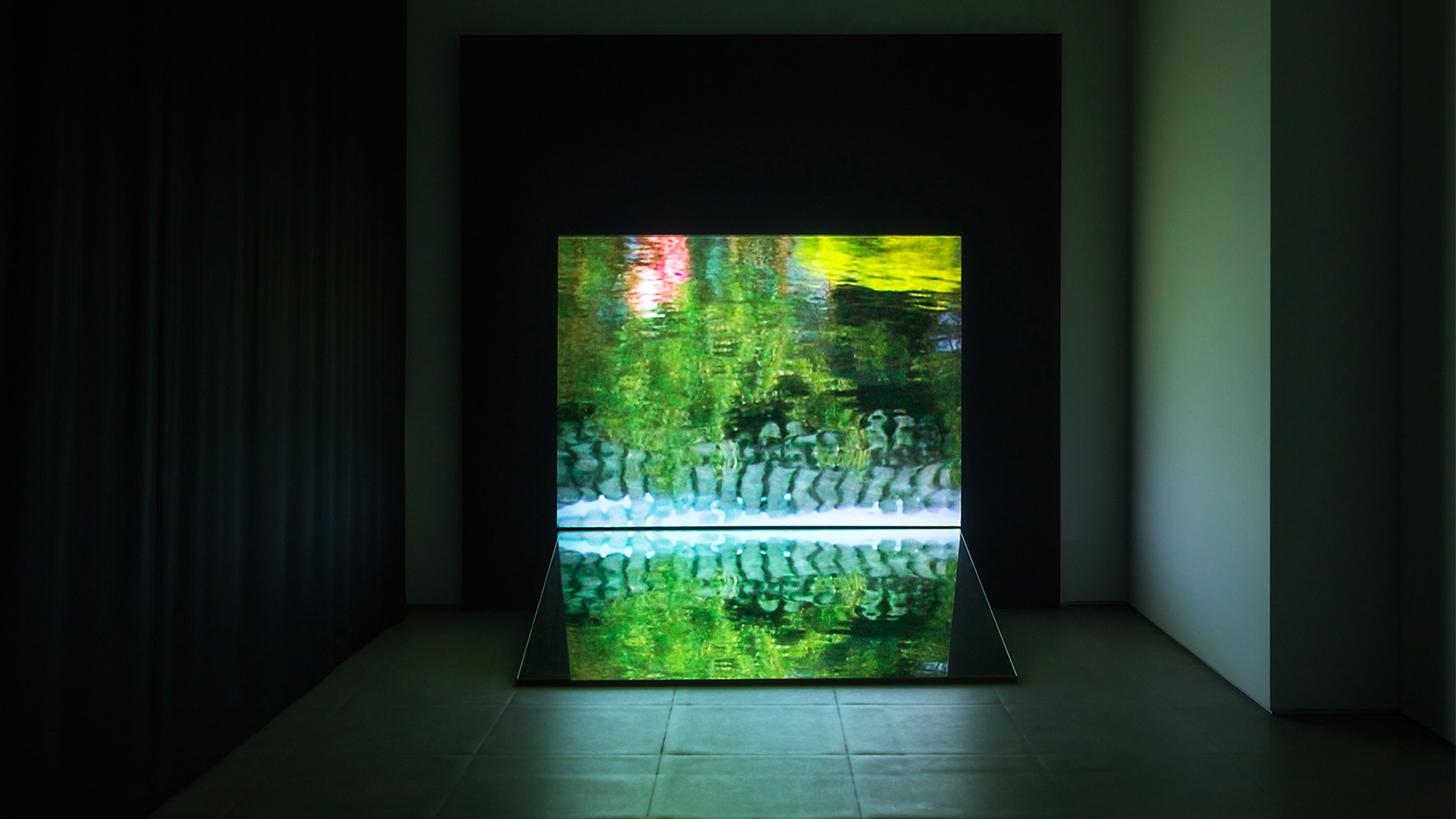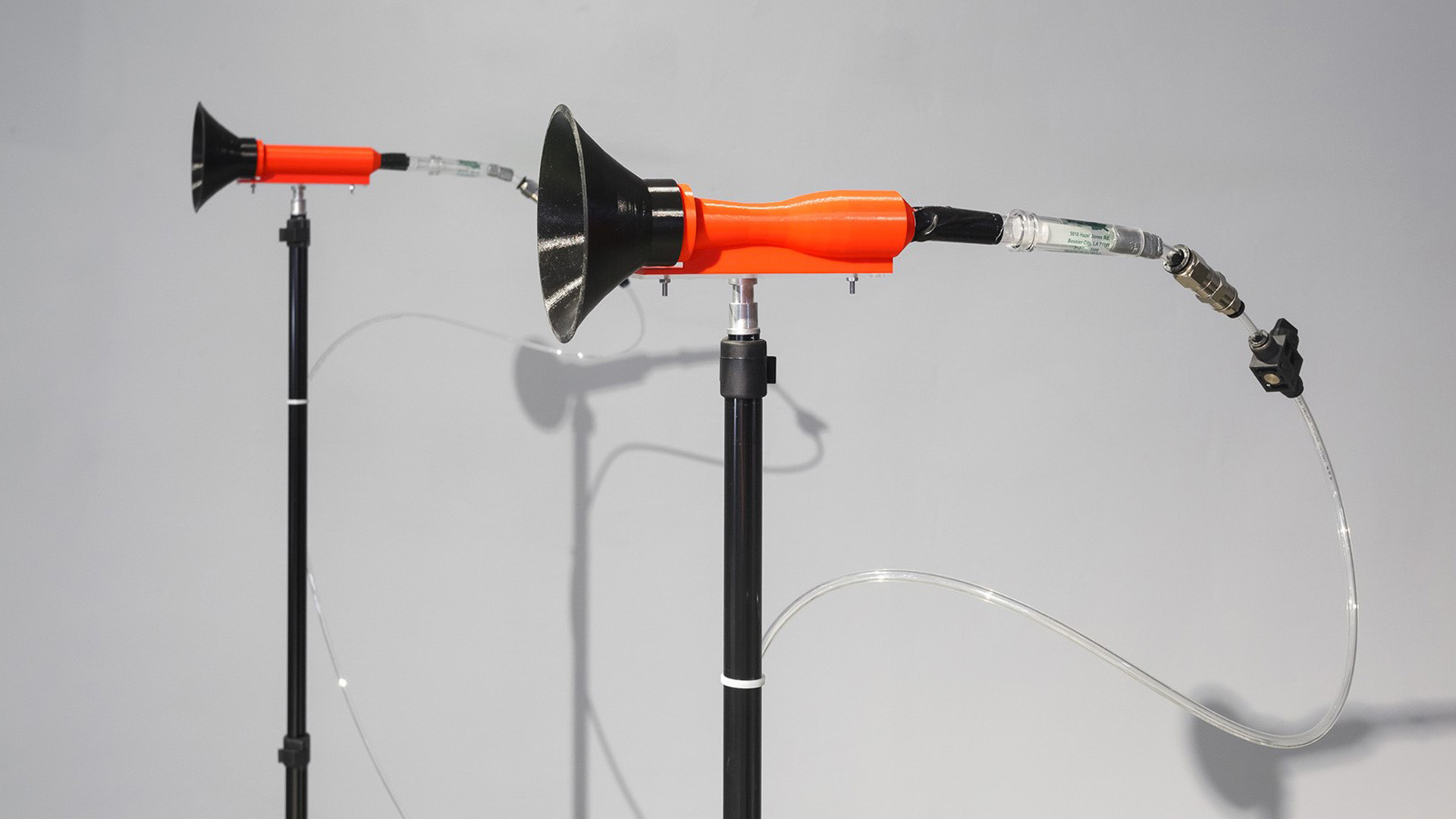Blog
Movement in the Age of CGI*
12 October 2018 Fri
Migration, mobility, and movement inform “Fluid Bodies”, a deeply unnerving exhibit of the perils and potentials of the Information Age. Universal Everything’s eight video installations allure and captivate, disturb and unsettle, and they cover a wide range of present-day problems: urbanization, mass mentality, and the existential implications of artificial general intelligence.
As high-concept works, they operate on deceptively simple ideas. A CGI master teaches dance movements to a machine hungry for information. A city reveals its metamorphoses while walking with the swagger of a private. Ant-like crowds migrate in all directions, sometimes in great conflict. There is a transcendent quality to those perfectly-rendered, immersive animations. They foretell the changing of the guard in humans’ relations to nature. They foreshadow our diminishing capacity to control, to dominate, and to subjugate.
In the past, frictionless, liquid movement was a privilege of nature and living beings, of rivers and women, of falls and men, of volcanoes and animals. Humans believed that machines would reveal their identities through their abrupt movements. “Fluid Bodies” shows that it may no longer be the case.
In the mid-1980s, Dutch director Paul Verhoeven faced a challenge about movement when he began filming a story centered around a crime-eradicating cyborg. In the story, Alex Murphy, a street cop murdered by a Detroit crime lord, is resurrected, Christ-like, in the form of a cyborg. In real life, the actor Peter Weller had to impersonate RoboCop, and found imitating the cyborg walk a demanding task. Over twenty-seven days, he got into a prosthetic every morning—it took the actor six and a half hours each time. But Weller found he couldn’t move like a robot however hard he tried.

Universal Everything, Machine Learning and Smart Matter, 2018
RoboCop (1987) was Verhoeven’s first film in Hollywood, and seeing his set coming to a standstill because of a failure to imitate robotic movement distressed him. He tasked a mime, Moni Yakim, with teaching the actor how to move like a robot. “What we want to do here, I think, is have some sort of liquid movement with a staccato on the end of it, so it's like butter, but then with a big, hard definition at the end of the movement,” Yakim told Weller. The mime taught the actor a new rhythm which, in the course of a few days, solved the gait problem and the production crisis.
In Machine Learning, 2018, a choreographer, Dwayne-Antony Simms, tries the opposite. While his student, a robot, imitates his movements and learns to balance and adjust its body, a reverse kind of learning ensues. Unlike Yakim’s instruction to add a staccato at the end of the liquid movement, it is imperative for the robot to avoid any interruption to the flow of its movements.
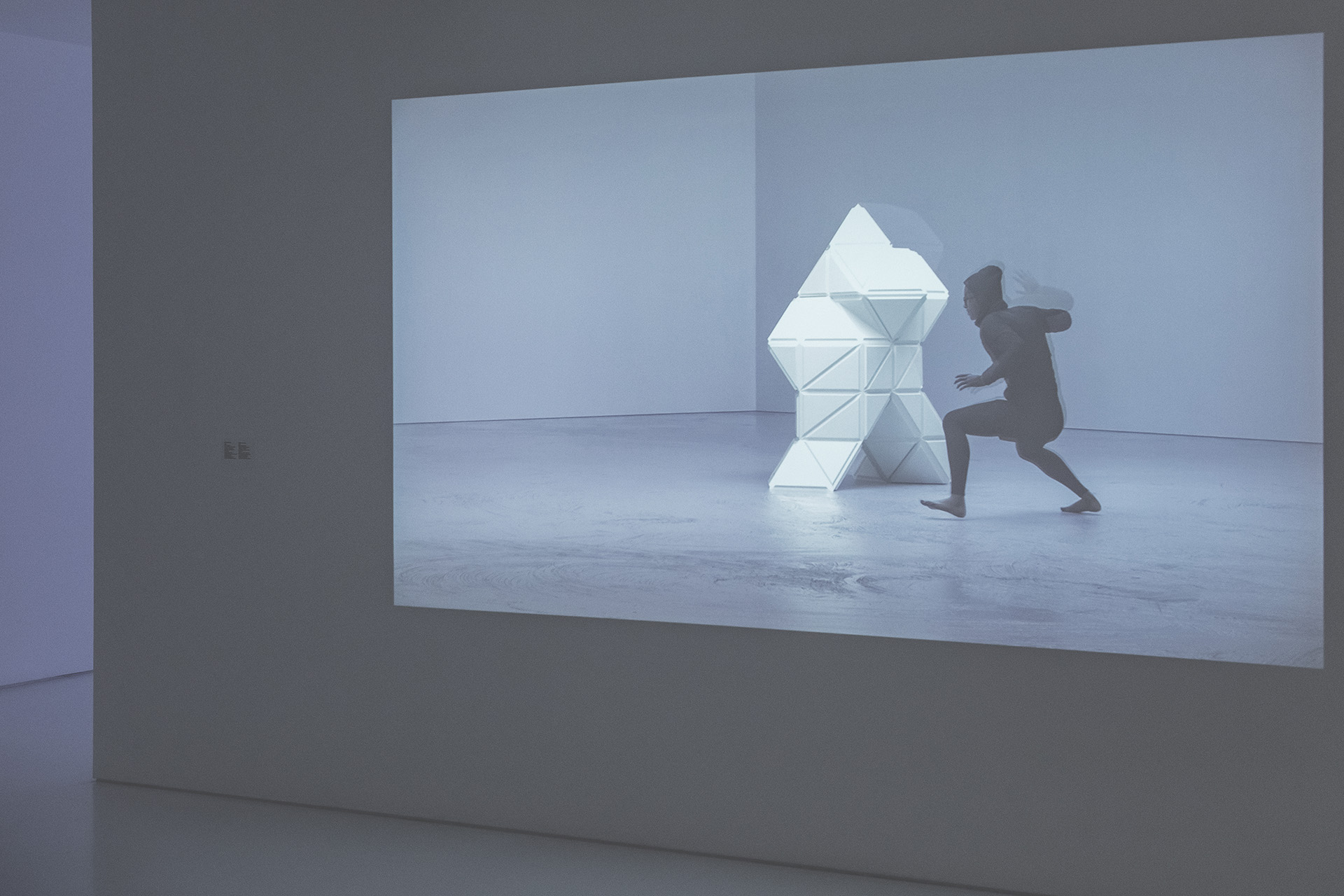
Universal Everything, Machine Learning, 2018
Walking City by Universal Everything (2014) takes the idea a step further, experimenting with the visualization of urbanization through an unceasing cycle of movement. The animation’s marching figure creates by destruction, just as Filippo Tommaso Marinetti, the Italian poet and art theorist, propagated in his Fascist Manifesto in 1919. The forward looking stride carries the self-confidence of Mao Zedong’s Long March in 1934. After all, advocates of gentrification, fascism, and communism have often legitimized the destruction brought about by their movements by pointing to the greater good of progress. But once set into motion, the Walking City can’t be stopped.
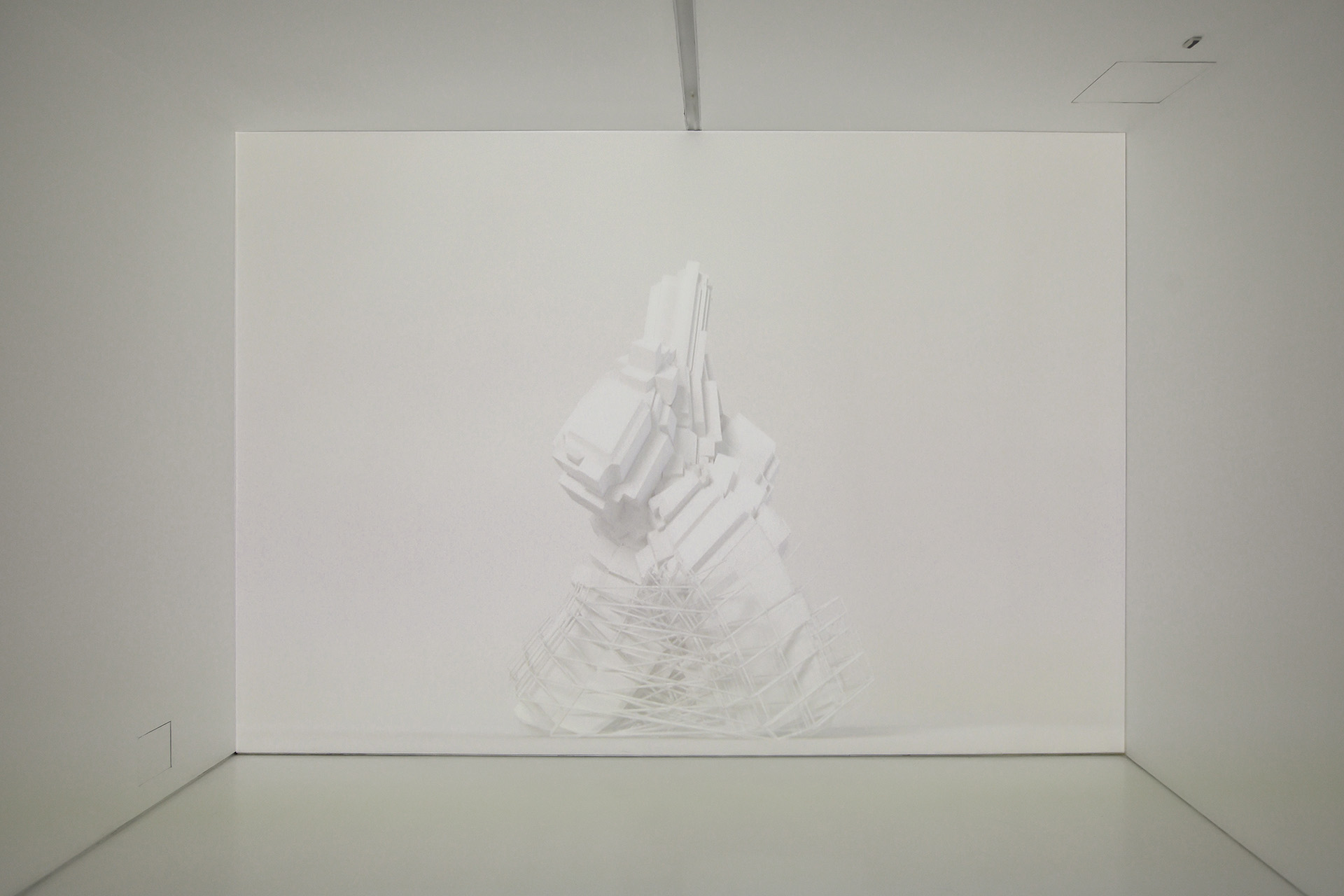
Universal Everything, Walking City, 2014
Politicians and activists sometimes describe the current-like quality of social movements when arguing for the indefeasibility of their ideas. On social media, progressive social movements like #MeToo or #BlackLivesMatter can inflict change precisely by the force they manage to concentrate on a singular person or cause, a particular abuser or nefarious policy. Tribes, 2018, digs into the choreographed nature of mass mentality, both on the street and in the digital town square. The animation unearths patterns of behavior, reproducing the sublime experience of watching the power of the masses. “Crowds”, “mobs”, “movements”, or “nations” all have the power to crush the odd one out; but they do so not always for the right reasons.
Tribe reminds viewers the importance of caution in social relations. Its tiny figures may share common goals, but the sheer power of their march can, in some cases, have undesired consequences. In ways large and small, moving masses rule over our spaces and they will gain increasing power over our lives.

Universal Everything, Tribes, 2018
But digital appearances can be deceiving when we expect them to accurately represent the will of the masses. Supreme Believers II, 2018, deftly illustrates the fleeting nature of our belief in populisms. Again, it shows a forward-movement, representing ideas of progress, but here the impossibility of progress is revealed in the movement itself. The cascading particles expose the unattainability of mass movement, in the literal sense of the word. A disagreement, however slight, may dismantle and particularize any movement at any point.
Movement from “backwardness” and darkness toward “progress” and light is an idea inherent in the Enlightenment, but religious mythologies also feature it. Portrait II, 2018, exists on a digital canvas resembling an iPad in shape (though it is much larger in size) and points to continuities between mythologies of religion, the Enlightenment and the digital age. The animation’s gracefully added brushstrokes exemplify a strong chiaroscuro and are a reminder of how vital the hand movement is for a specific art form. The brushstrokes land effortlessly, materializing with an uncanny precision—all their traces disappear at the end. The brushstrokes outline a liquid, continually metamorphosing human form, and raise questions about authenticity, authorship, and whether a great master like Rembrandt would announce herself today through digital brushstrokes. The living portrait, evocative and rich with meaning, ends up concealing its author. In an age where fingerprints are used for user authentication, “the death of the author” occurs once again, on a touchscreen.
That computer programmed animations can reproduce movement with such exactitude is troubling, and Universal Everything implies that the reverse of human domination may not be necessarily good news. But these animations also brace us to the growing existential risk from artificial general intelligence, and may prove useful for our survival. As visitors of “Fluid Bodies”, we retain our position as observers and appreciators; all the while we are aware of being monitored by computer systems subtly installed into the art space, working invisibly, silently, and with immense power.
*CGI: Computer Generated Image.
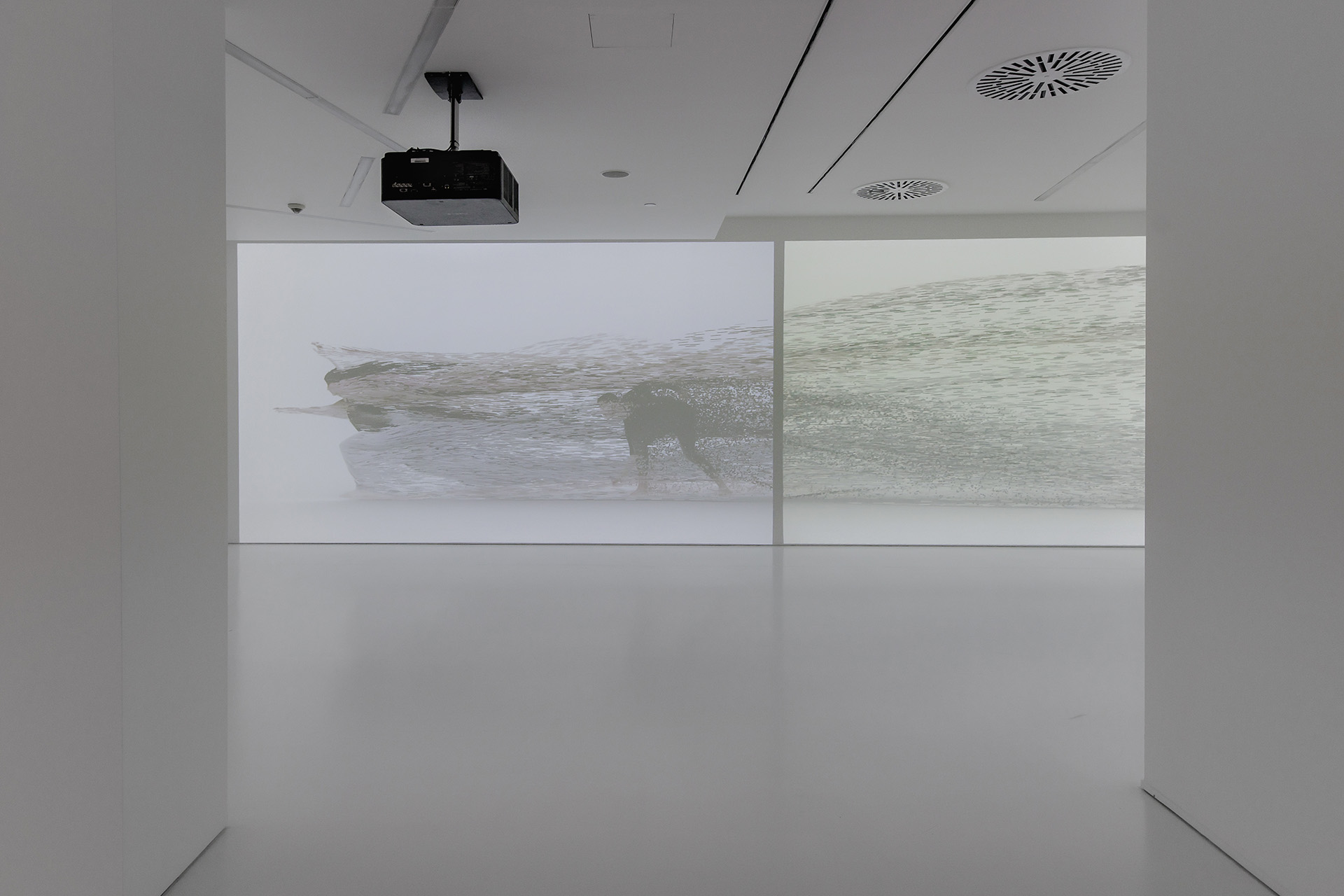
Universal Everything, Supreme Believers II, 2018
ABOUT THE WRITER
Kaya Genç is a contributor to The New York Review of Booksand the author of Under the Shadow (I.B. Tauris), a ‘fascinating and informative compilation that represents both investigative and literary journalism at their finest’ according to Publishers Weekly. The Economist called Under the Shadow a ‘refreshingly balanced’ book whose author ‘has announced himself as a voice to be listened to’. The Atlanticpicked Kaya’s writings for the magazine’s ‘best works of journalism in 2014’ list. His writing has appeared in The New York Times, The Nation, The Paris Review, The Times Literary Supplement and The London Review of Books. Kaya holds a Ph.D. in English Literature. He is a critic for Artforum, and he gave lectures at venues including the Royal Anthropological Institute and appeared live on flagship programmes including Midday on WNYC and BBC’s Start the Week.


